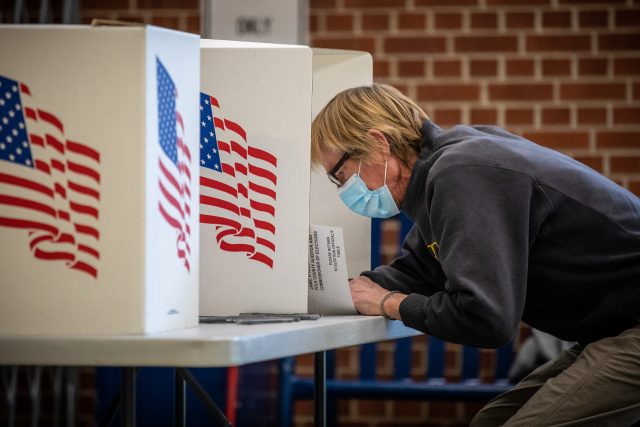The Organization for Security and Cooperation in Europe (OSCE) Wednesday released its interim election observation report on the US midterm elections. The report, released approximately two weeks before the November 8 election, expressed concerns about “intensely divisive” rhetoric, threats to election administrators, lack of trust in media and other issues.One of the key themes of the report was deep divisions leading to mistrust among voters. This is most evident in campaign rhetoric, but impacts many aspects of the election. The report notes:Political campaigns by both Democratic and Republican parties are marked by intensely divisive and at times inflammatory rhetoric, including allegations by some political leaders and candidates from both sides that their opponents were seeking to subvert democracy and were a threat to the United States. Some of the language used in rallies observed and social networks monitored by the ODIHR LEOM sought to delegitimize the other party, was potentially defamatory and in several instances invoked racist, xenophobic, transphobic, and homophobic tropes.Much of that rhetoric has to do with unfounded Republican claims that the 2020 election was fraudulent or unreliable. Since 2020, Republicans have campaigned on election integrity, speaking regularly on the “need to prevent the casting and counting of illegal votes.” The report notes with concern that Republicans have nominated numerous candidates that question or reject the results of the 2020 election, including 9 Secretary of State candidates who would directly oversee elections and 20 gubernatorial candidates. Democrats have responded by focusing on preventing the “potential for rejection of legitimate votes.” As a result, the US is currently experiencing “diminishing trust in a fundamentally robust electoral process” among voters of various political affiliations.Extreme rhetoric has been magnified by unprecedented spending, which often lacks transparency. The report estimates that USD 9.3 billion will be spent in campaign expenditures by the end of the midterm election. Such high degree of spending, too often coming from undisclosed contributors, does “not allow voters to make a well-informed choice.”It is the media’s role to counteract campaign rhetoric and misinformation, giving voters the critical information they need to make an informed decision. Though the report says that media in the US remains pluralistic and independent, deep polarization and regular attacks on media members over the years continue to contribute to declining trust. In addition, social media is an increasingly prominent source of political information for voters, something purveyors of misinformation have sought to exploit. Social media companies have updated their misinformation policies to address this but have had varying degrees of success.Election observers in 41 states expressed concerns about threats to election officials. Congress allocated funds to enhance protection of election workers, and the Department of Justice and FBI established a Joint Taskforce to investigate reported threats. Since July 2021, that Joint Taskforce has received more than 1,000 reports of election workers facing hostility and harassment.Though OSCE’s election observation team for the US midterms has a diminished capacity, they expressed confidence in their ability to successfully observe the election. There are still challenges to their mission, as only 12 states (and DC) explicitly provide for international election observation, while 17 prohibit international observers on election day. Local poll watchers play a critical roll in filling those observation gaps. Some observers did express concern, however, that partisan poll watchers “may use their position to unduly interfere in the process on election day.”Ultimately, the interim report painted a picture of a robust American democracy facing numerous challenges. OSCE will release its preliminary midterm report on November 9, the day after the election, and its final report approximately 8 weeks after election day.


The Most Read
Сryptocurrencies
Bitcoin and Altcoins Trading Near Make-or-Break Levels
Financial crimes
Thieves targeted crypto execs and threatened their families in wide-ranging scheme
Financial crimes
Visa Warning: Hackers Ramp Up Card Stealing Attacks At Gas Stations
News
Capitalism is having an identity crisis – but it is still the best system
Uncategorized
The 73-year-old Vietnamese refugee is responsible for bringing Sriracha to American consumers
Uncategorized
Electric Truckmaker Rivian, Backed By Amazon, Ford, Raises Whopping $1.3 Billion